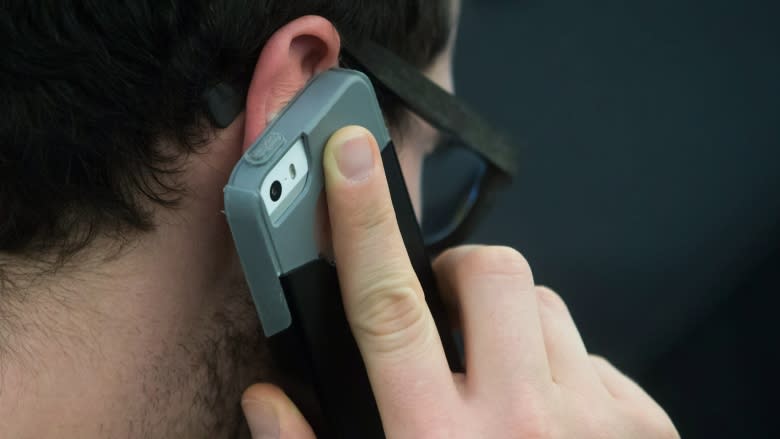Too much talking, cellphone use, during federal 'lockdown' exercise, report says
A "lockdown" exercise designed to test whether federal workers know what to do if a gunman ever stormed their Ottawa office building was marred by too much talking, too many ringing cellphones and too many hiding spots that were too visible.
"Employees at all levels were heard talking while they were hiding," says an internal report on the March 30, 2016, exercise.
"Remind employees to stay quiet to prevent the aggressor from knowing where they are hiding."
Real-life lockdown of Oct. 22, 2014
The fake "lockdown" was conducted this spring just a few blocks from Parliament Hill, where a real gunman had stormed the Centre Block and started shooting on Oct. 22, 2014. The gunman died in a shootout, after killing a soldier at the National War Memorial and injuring a House of Commons guard.
The 2014 incident triggered lockdowns of dozens of downtown office buildings for most of the day, and exposed some security problems.
The recent exercise, carried out on 11 floors of the C.D. Howe Building, was led by Industry Canada, but also involved staff from the House of Commons, the auditor general, the Canadian Space Agency, Shared Services Canada, and a tribunals support agency. Eleven other departments sent observers.
It was billed as the first-ever "lockdown" exercise involving ordinary office workers. Other such tests had previously involved only employees of security agencies, such as the RCMP.
An April 2016 final report on the "Pilot Lockdown Exercise" was obtained by CBC News under the Access to Information Act.
Plenty of notice
Local police, RCMP and the office workers themselves were given plenty of notice for the 2 p.m. ET exercise, and were told how to behave over the eight minutes that a faux gunman was supposedly roaming the halls looking for victims.
But the concept seemed to be poorly understood, or not taken seriously, by significant numbers of participants.
"Cellular telephones could be heard ringing in hiding areas," says the report. "Remind employees to participate fully in the exercise by turning off their electronic devices."
Observers also noted that the glow from cellphones could tip an "active shooter" to the presence of a hiding worker. "RCMP Protective Policing recommends that cellular telephones be turned off during an incident and this approach will be evaluated."
Glass walls and windows in some rooms also "provided minimal visual protection and left employees exposed," creating poor hiding places.
"Hide under desks or other furniture if they offer more protection," the report advised.
Some emergency officers had told office workers in advance exactly where to hide during the exercise — advice that was considered a security flaw in the event the shooter himself turned out to be a disgruntled office worker.
Called a 'success'
"Hiding areas are not to be pre-assigned, as they identify the location of the employees if it is an insider threat," says the report. "Rather, remind employees of the importance of considering a variety of possible hiding locations as opposed to a pre-planned location."
Last week, an Industry Canada spokeswoman called the exercise a "success" and said there were "no significant concerns."
Stefanie Power added that similar "lockdown" exercises were being planned for Industry Canada's regional offices. One internal document said fake "lockdowns" will become annual events.
Garry Clement, a former senior RCMP officer who now is a security consultant, said such exercises are useful only if everybody plays the game.
"Exercises of this nature are of tremendous value providing everyone follows the rules as if the scenario was real," said Clement, president and CEO Clement Advisory Group.
"Failure to carry out an exercise in this manner results in it being a fundamental failure since it is impossible to identify weaknesses in current practices."
The Oct. 22, 2014, shootings at the war memorial and on Parliament Hill have prompted a raft of security measures in Ottawa, including the creation of a fully armed Parliamentary Protective Service.
Follow @DeanBeeby on Twitter



